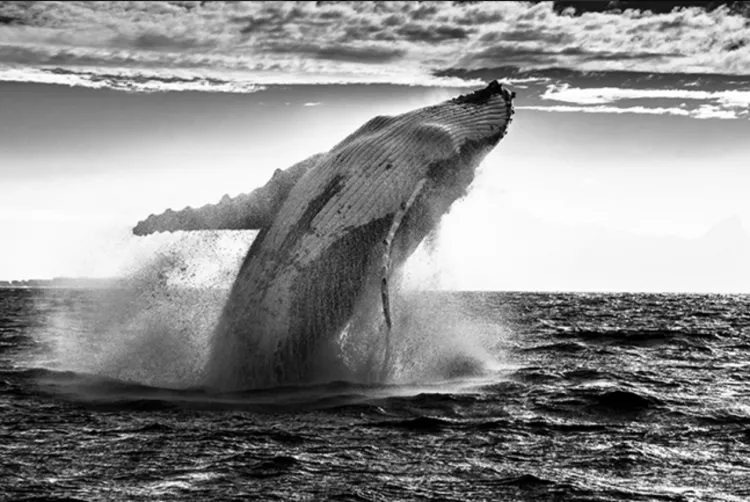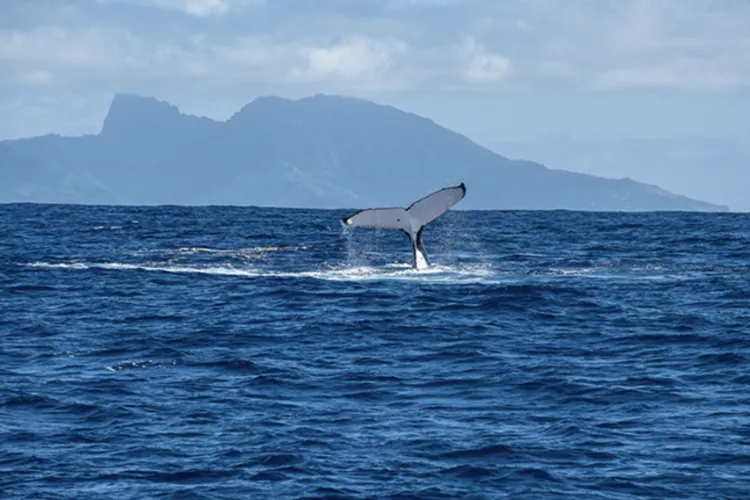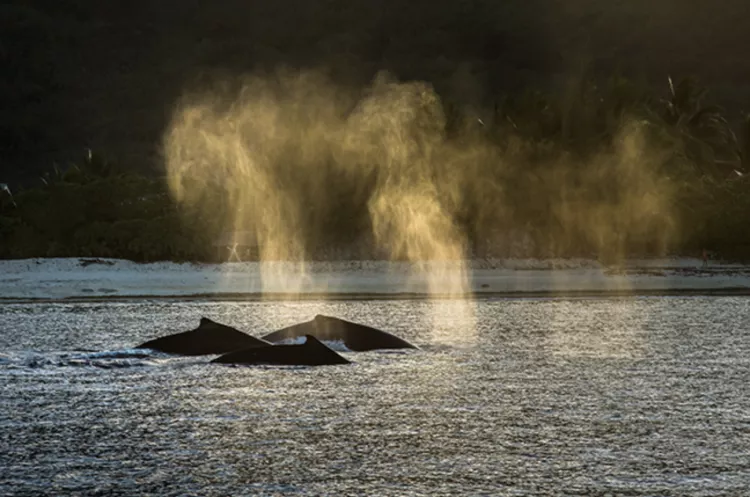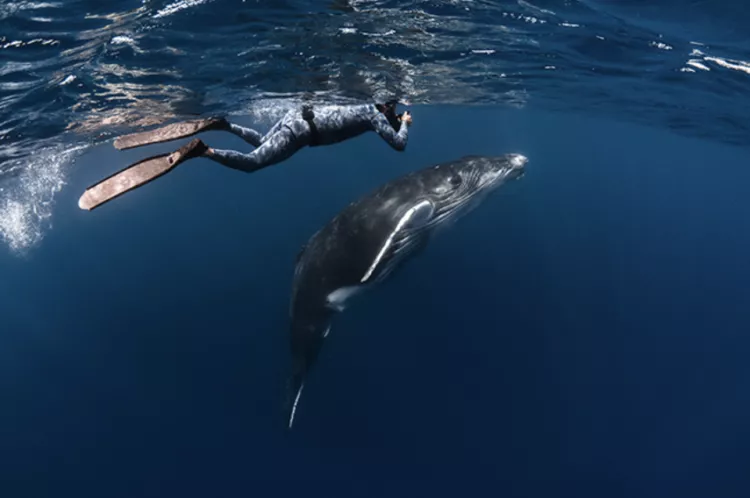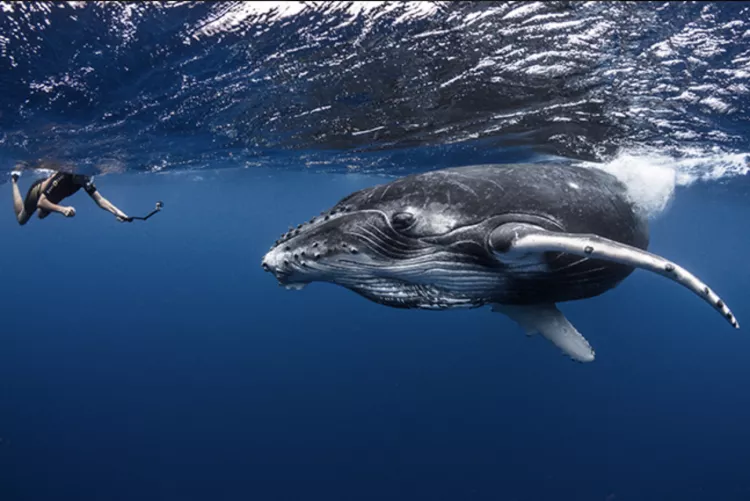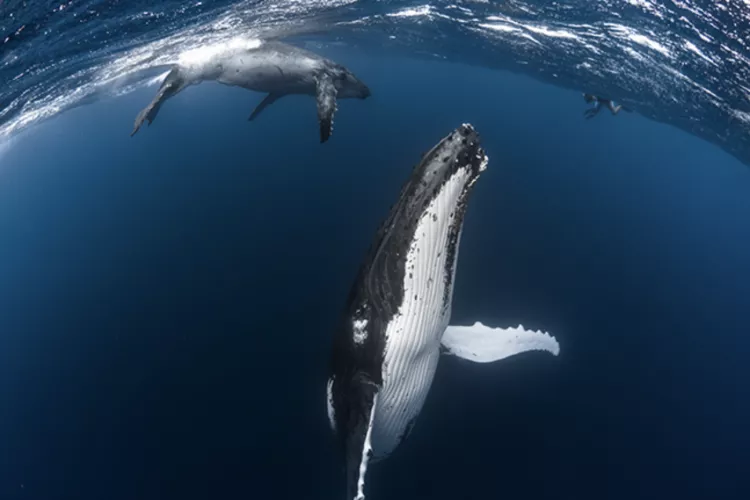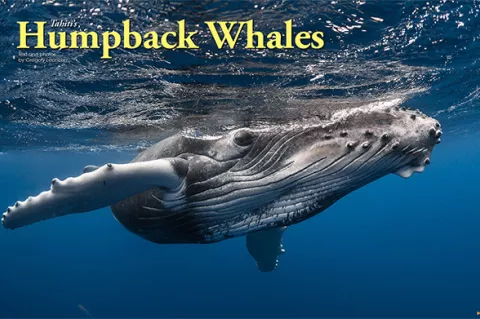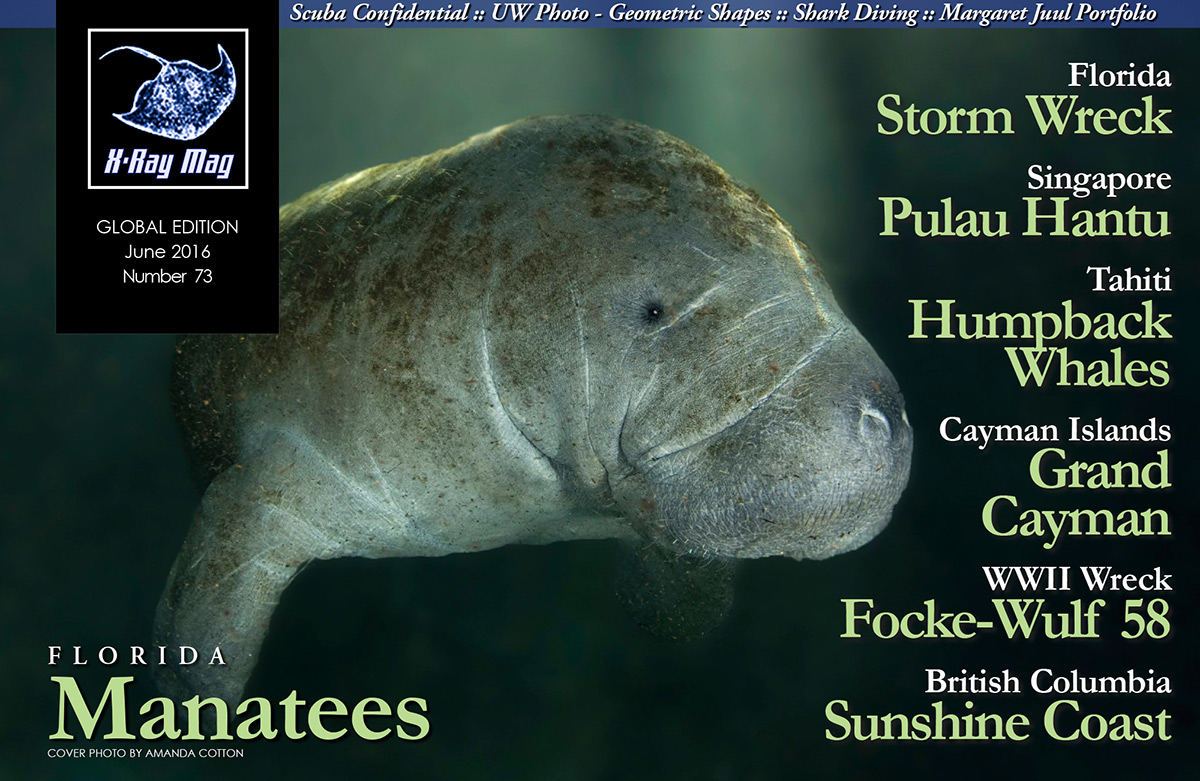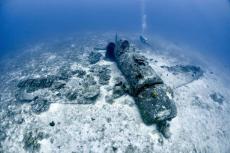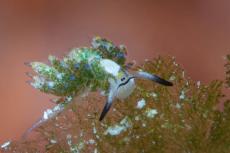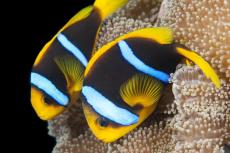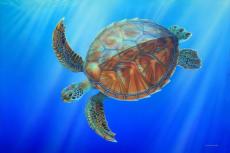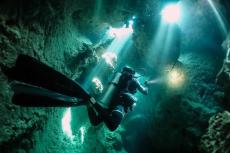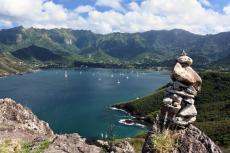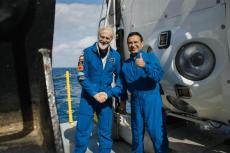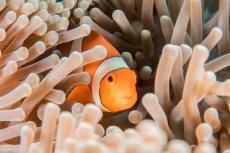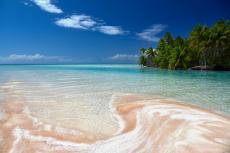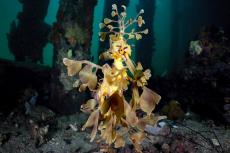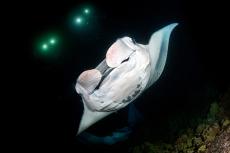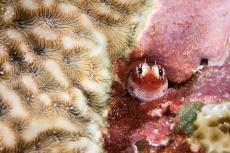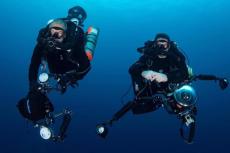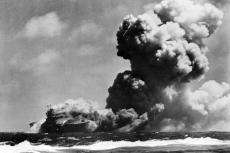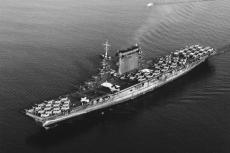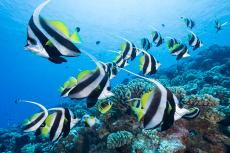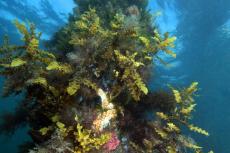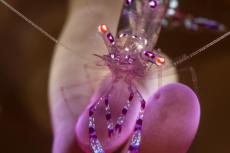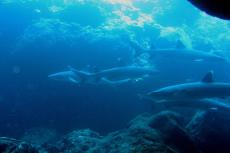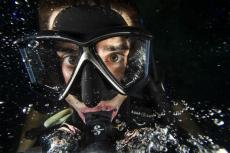As our dive boat glided through Papeete Channel off the northern coast of Tahiti, two distinct spouts appeared on the horizon. We were carefully making our way toward them when suddenly two tails emerged out of the water and then majestically disappeared again. Benoit, our guide, carefully got into the water. He quietly swam in the wake of the whales until finally, he lifted his fist into the air to indicate their presence. Excited about the idea of locking eyes with a 40-ton whale, we divers in the boat donned our masks, snorkels and fins and slid into the Polynesian blue for a unique encounter.
Contributed by
Factfile
Gregory Leceour is an internationally published underwater photographer and dive writer based in France.
For more information, please visit: www.greglecoeur.com.
Located in the heart of the Pacific Ocean, French Polynesia covers an area of four million sq km, roughly the size of Europe. Most of this area is ocean, only 4,000 sq km of land forms five archipelagos: Society Islands, Tuamotu Archipelago, Gambier Islands, Marquesas Islands and Austral Islands. There are two types of islands: high, mountainous islands and low-lying islands or atolls with coral-fringed lagoons. Tahiti belongs to the Windward Islands, which are part of the Society Islands. It is a volcanic island surrounded by coral reefs.
How to get there
Air Tahiti Nui
Tour operator
For the organization of an all-inn journey from Paris, the local agency e-Tahiti Travel (TOPDIVE group) is a specialist in diving holidays to Polynesia and will organize a tailored dive holiday at the best price. Staff member Mary Anne has dived the islands extensively and she can organize your holiday according to your desires and budget.
For French citizens: a passport valid for six months after return. For transit through the United States, you will need to apply for an ESTA.
Language
The official language of French Polynesia is French, but many locals speak Reo ma'ohi.
Accommodation
Polynesia offers a wide range of accommodation ranging from the most luxurious hotels to small guesthouses. Liveaboards are also available.
After diving
Besides exceptional diving, the Polynesian islands offer many opportunities to discover other natural wonders on land, at sea and in the air. Tahiti Excursions offers a wide choice for all tastes and all budgets.
After having spent summer in the polar regions of the Antarctic, gorging on tonnes of krill freed from the ice floes in spring, humpback whales embark on an instinct-driven migration that is vital for their survival.
It is the middle of winter in the southern hemisphere and the humpbacks have traveled thousands of kilometers to reach the warm Polynesian waters. Solitary or in small groups, they carve through the waters towards their destination to give birth before heading back towards the South Pole.
The island of Tahiti, and its little sister Moorea, are also visited by large numbers of these Mysticeti (baleen whales). Appearing as if by appointment, they patrol the shallow reefs fringing the channels and lagoons all over the islands.
In recent years, marine biologists have observed a strong increase in the number of whales visiting the Tahitian waters. This is definitely thanks to the 1986 moratorium that ended whale hunting, turning French Polynesia into a true whale sanctuary.
Here, it is possible to observe individual whales at different stages of life, each with their own specific behavior. You can find females, inseparable from the young to which they have just given birth; adolescent solitary individuals that assemble into little groups; males singing their songs to warn off contenders; or fertile females that provoke violent fights between males before giving in to a few moments of tenderness.
French Polynesia is an exceptional destination to observe whales and remains one of the rare places on our planet where it is still legal for a few lucky divers to get in the water with them. To do so, the French Polynesia Ministry of Environment has developed rules that aim to ensure safe and respectful animal encounters. It is crucial for nature enthusiasts visiting these blue Pacific waters between July and October to strictly respect the rules about approaching the animals and when to get in the water.
Diving with whales
Enchanted by the perfume of tiare flowers, crowned with the traditional necklace of multi-colored flowers, and accompanied by the sound of toere drums and ukuleles, visiting divers disembarked on the tarmac of Faa’a Airport. We were here and we had dreamed about this moment for a long time. Tahiti and all its treasures were ready to be revealed to us, more specifically, the incredible spectacle of an underwater ballet performed by graceful giants.
It was early in the morning and we were embarking on the Parata, a comfortable vessel moored at the jetty of TOPDIVE Tahiti, itself found in the luxurious InterContinental Tahiti Resort & Spa. At the rudder was Teiki, a Polynesian who is passionate and highly experienced when it comes to whale encounters. Conducting the pre-dive briefing was Benoit, a dive instructor who has been living in Tahiti for many years.
We were given an extensive briefing. To start off, Benoit explained the anatomy, behavior, migration and history of humpback whales. Then he explained the organization of in-water encounters, specifically safety matters and the code of conduct to ensure minimal disturbance to the whales. It was important to keep a respectful distance, freediving was not allowed, and obviously, touching the animals was strictly forbidden!
He emphasized the fact that these were wild animals and that they alone would decided whether to accept our presence and join us to satisfy their curiosity. The best thing about the game were the baby whales, eager to explore their world and the creatures in it.
Finding the whales
We cast off and headed north towards the Papeete Channel to reach the ocean.
The lagoon unfolded before our eyes. On one side was the reef showing its colors at low tide, on the other was the lush foliage of Tahiti, with Mont Orohena looming in the background. The surface of the water was mirror-flat and the different shades of blue made the whole scene look like a postcard.
Approaching the channel, we passed a few traditional canoes, and later, a pod of spinner dolphins escorted us to the mouth of the channel. The scene was gorgeous, the sea was calm and the light gradually intensified. In the background was a breath-taking view of the small island of Moorea where surfers enjoyed the waves breaking on the reef.
The ocean gave itself up to us as we watched the water’s surface in search of any signs of whales. In the distance, we saw a group of small boats—a sign of the presence of one or more whales. But we decided to take the opposite course towards Point Venus instead.
We suddenly saw a huge splash in the distance, followed by several blows—water sprays of whales exhaling. As we reached the area, we cut the engines and waited. After a few minutes, a small calf took a puff of air, a hundred meters away from the boat. It swam in circles, taking several breaths, and then disappeared.
Teiki asked us to stand ready; Benoit had already gone in the water to look for the whales. Fins and masks on, snorkels in our mouths, we were more than ready once he confirmed the presence of a mother and her little one directly below his fins.
Diving with humpbacks
The goal was to be as unobtrusive as possible, so we carefully slid into the water, one by one, and quietly swam in their direction. The clear water revealed a huge female, about 20 meters deep, sleeping with one eye open. Her lighter-colored calf was wrapped under her pectoral fins.
We remained together and floated on the surface. Then the calf separated from its mother and slowly rose to break the surface right before our eyes. We held our breaths as it watched us while performing several rolls and somersaults. It approached us, swimming in a disorderly way, and circled around us, without breaking eye contact, before diving down again to reach its mother. We were amazed by its playful little game, and it seemed the calf was interested in the strange animals that we must have seemed to be.
After a few minutes, the calf made another trip to the surface. This time, it looked more determined and less hesitant. Under the careful gaze of its mother, who seemed to accept our presence, it came directly towards us. It came close—too close, forcing us to swim aside and splitting our group in two.
Its curiosity was boundless! It passed between the swimmers and fixed its eyes on all of us. With its full four meters of length, it put up a show that seemed to make fun of us poor swimmers in comparison.
Delicately and agilely, it performed a series of somersaults and pirouettes, as if inviting us to join in. With its innocent and carefree gaze, it transported us to a gentle world full of joy.
Then it was the mother’s turn to surface. She rose from the depths and ended the game the calf was playing. She hardly seemed to have moved at all, and yet here she was, already at the surface.
Interposed between the calf and us, she took a breath, and with a single stroke of her tail, she moved her 15m length and thousands of kilos. As she passed in front of us, we felt infinitely small compared to her size and power. She only needed a few undulations to leave us behind and disappear into the blue, waving goodbye to us with her graceful tail.
We returned to our boat, overwhelmed with emotions. Experiencing such a moment left a lasting memory.
More encounters
For several days, we racked up the boat trips in search for more of these moments. With the TOPDIVE team, we observed many more whales and got in the water with them multiple times.
We crossed paths with two males singing. Hanging upright and upside down, they sang for hours. Being in the water with them and listening to their songs was incredible! Their singing was so powerful, it reverberated all through our bodies and everything else around, especially the underwater housings of our cameras.
On another day, we encountered a pod of pilot whales, mixed with a group of young humpbacks. Visibility was poor that day, so imagine this surprise when getting in the water: While we were hoping to interact with the giants and maybe watch the pilot whales passing by, it was an oceanic whitetip shark that passed by! Inquisitive by nature, the shark circled us a few times before disappearing into the blue.
We also witnessed scenes of violence—fighting male humpbacks competing to dethrone the leading contender, known as the "escort", on track to win a fertile female. For hours, the challengers harassed the escort, performing spectacular moves. The escort had to compete, using all of its brutal, physical prowess to display its superior might and impose its dominance.
The activity at the surface was also a treat. Whales performed incredible leaps, lifting their 40-ton bodies completely out of the water, or using their pectoral fins and tails to violently hit the surface of the water. Whether it was a form of communication, socialization, intimidation or de-worming, we did not know why they did it. But one thing was certain, it made for a great show!
Conservation
It is therefore important to preserve this heritage for future generations. These gentle giants deserve the utmost respect, especially as their presence in Polynesian waters is not a coincidence.
Keep in mind that the whales are here to breed and calve away from predators; their survival depends on it. Just because they accept our presence does not mean we can abuse their trust by disrupting their behavior. ■
The author wishes to thank TopDive (www.topdive.com), Tahiti Tourisme (www.tahiti-tourisme.fr), E-Tahiti Travel (www.etahititravel.pf), Air Tahiti Nui (www.airtahitinui.com), Aqua Lung (www.aqualung.com), and Nauticam (www.nauticam.com).

